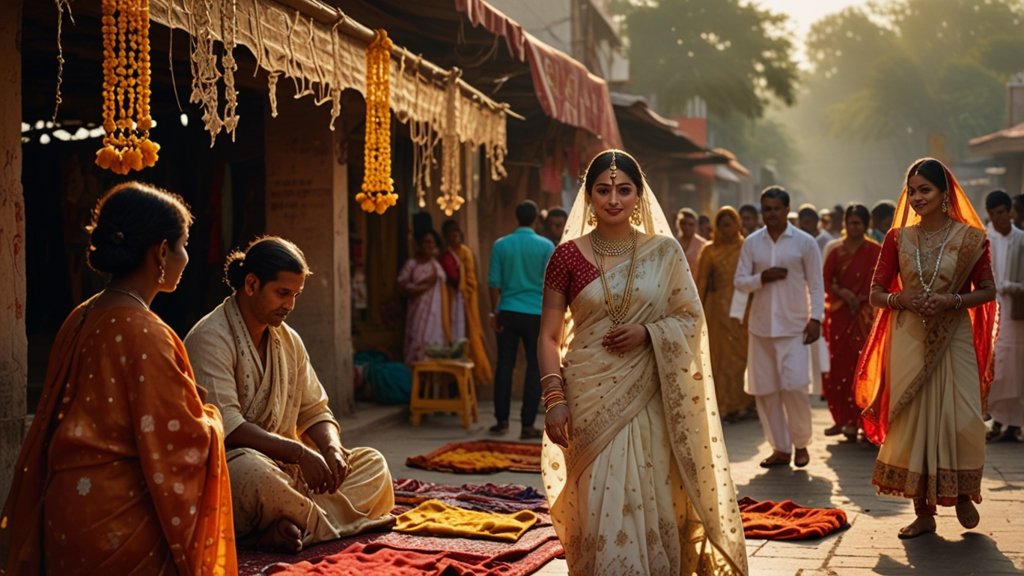Imagine scrolling through Instagram and stumbling upon a kaleidoscope of colors: cascading fabrics draped like art, bold patterns harmonizing with intricate accessories, and confident smiles radiating from young women redefining what modesty means. Welcome to the world of Hijabhoojup—a movement turning heads and hashtags into a global conversation about identity, creativity, and community.
Unlike traditional modest fashion trends, Hijabhoojup isn’t about rigid rules or muted tones. It’s a celebration of individuality, where cultural heritage meets TikTok tutorials and DIY innovation. Let’s unravel how this phenomenon is reshaping wardrobes—and narratives—one vibrant post at a time.
What Is Hijabhoojup? Beyond Fabric, a Cultural Reset
Hijabhoojup (pronounced hee-jab-hoo-jup) isn’t a brand or a single style—it’s a grassroots movement pioneered by Gen Z and millennial Muslim women. Rooted in the hijab’s traditional values of modesty, it reimagines draping techniques, fabric choices, and styling as tools for self-expression. Think silk scarves twisted into avant-garde shapes, floral prints paired with streetwear, or embroidery telling personal stories.
Key Elements of Hijabhoojup
- Innovative Draping: From turban-inspired wraps to layered asymmetrical designs.
- Vibrant Fabrics: Neon hues, metallic threads, and eco-friendly materials.
- Personalization: Accessories like chains, pins, or hand-painted motifs.
- Community-Driven: Tutorials, challenges, and storytelling via #Hijabhoojup.
How Social Media Fueled a Fashion Rebellion
Hijabhoojup’s rise mirrors the democratization of fashion through platforms like Instagram and TikTok. Influencers such as Amina Ahmed (@HijabCanvas) and Zahra Khan (@ModestMuse) have amassed millions of views by sharing:
- Step-by-Step Tutorials: “How to turn a square scarf into a cape-like drape.”
- Cultural Narratives: Stories about balancing tradition with modern life.
- Sustainability Hacks: Upcycling old fabrics into statement pieces.
Hijabhoojup vs. Traditional Modest Fashion
| Aspect | Traditional Modest Fashion | Hijabhoojup |
|---|---|---|
| Color Palette | Neutral tones, muted shades | Bold prints, neon accents |
| Styling Focus | Concealment, uniformity | Individuality, experimentation |
| Community Role | Local tailors, boutiques | Global online networks |
| Influence Drivers | Designers, fashion houses | Micro-influencers, DIY creators |
Why Hijabhoojup Resonates: More Than Just Aesthetic
This movement taps into deeper aspirations:
- Reclaiming Agency: Young women are challenging stereotypes that equate modesty with invisibility.
- Cultural Hybridity: Mixing ancestral textiles (like Indonesian batik or Nigerian ankara) with contemporary cuts.
- Economic Empowerment: Small businesses thrive by selling handmade pins, scarves, and styling kits.
Case Study: Sara’s Story
Sara, a 24-year-old from Kuala Lumpur, started posting Hijabhoojup tutorials during lockdown. Her video on “draping with recycled sari fabric” went viral, leading to a collaboration with a sustainable fashion brand. “It’s not just about looking good,” she says. “It’s about showing the world we’re multifaceted.”
How to Embrace Hijabhoojup: 3 Starter Tips
- Play with Proportions: Pair oversized blazers with fitted hijabs for contrast.
- Mix Textures: Try a velvet scarf with a linen dress.
- Accessorize Fearlessly: Add a brooch or woven headband for flair.
The Hijabhoojup Staircase
- Base Layer: Choose a breathable under-scarf.
- Drape: Experiment with twists, folds, or loose tails.
- Secure: Use magnets or pins for structure.
- Accent: Layer necklaces or tassels.
The Future of Modest Fashion: Where Does Hijabhoojup Lead?
Analysts predict the global modest fashion market will hit $402 billion by 2024—and Hijabhoojup is at the forefront. Brands like Modanisa and Haute Hijab now feature influencer-designed collections, while tech startups develop apps for virtual styling. Yet, the heart of the movement remains its community: a space where creativity and faith coexist.
You May Also Read: Dress of UP: A Vibrant Tapestry of Tradition and Craftsmanship
Conclusion
Hijabhoojup isn’t just a trend—it’s a testament to how fashion can empower, connect, and redefine identities. Whether you’re experimenting with your first drape or simply curious, this movement invites you to rethink what modesty can look like. Ready to join the revolution? Grab a scarf, hit record, and let your creativity unfold.
FAQs
Can non-Muslims participate in Hijabhoojup?
While rooted in Islamic modesty, the movement welcomes anyone inspired by its ethos of creativity and self-expression.
Are expensive fabrics necessary?
Not at all! Thrifted scarves and DIY dyes are celebrated.
How do I find Hijabhoojup influencers?
Search #Hijabhoojup on TikTok or Instagram—you’ll find thousands of creators.
Is Hijabhoojup accepted in conservative communities?
Views vary, but many see it as a bridge between tradition and modernity.
Can Hijabhoojup work for formal events?
Absolutely! Try satin drapes or pearl-embellished pins for weddings.









